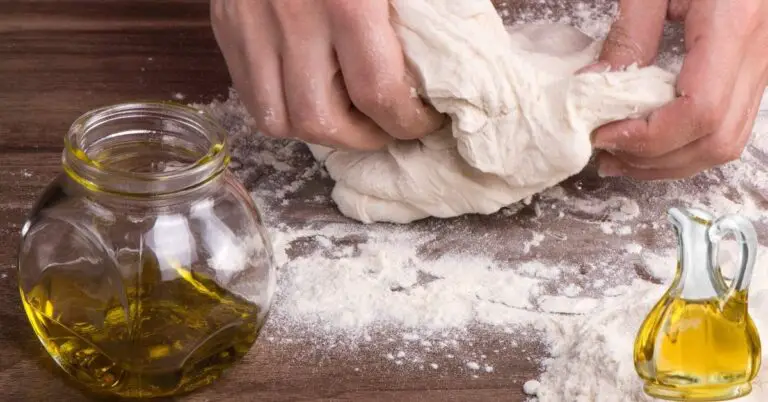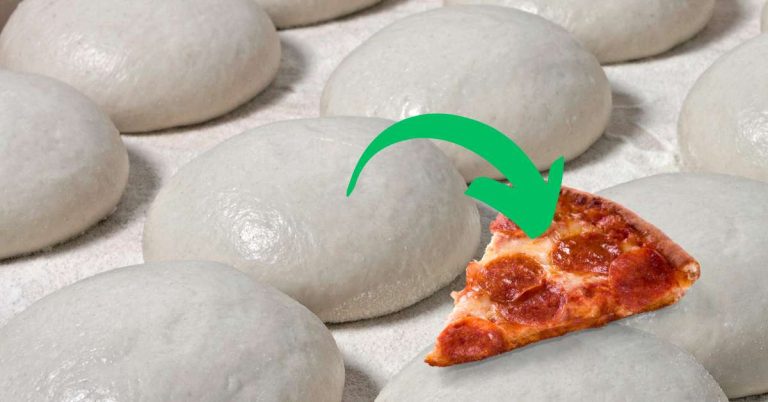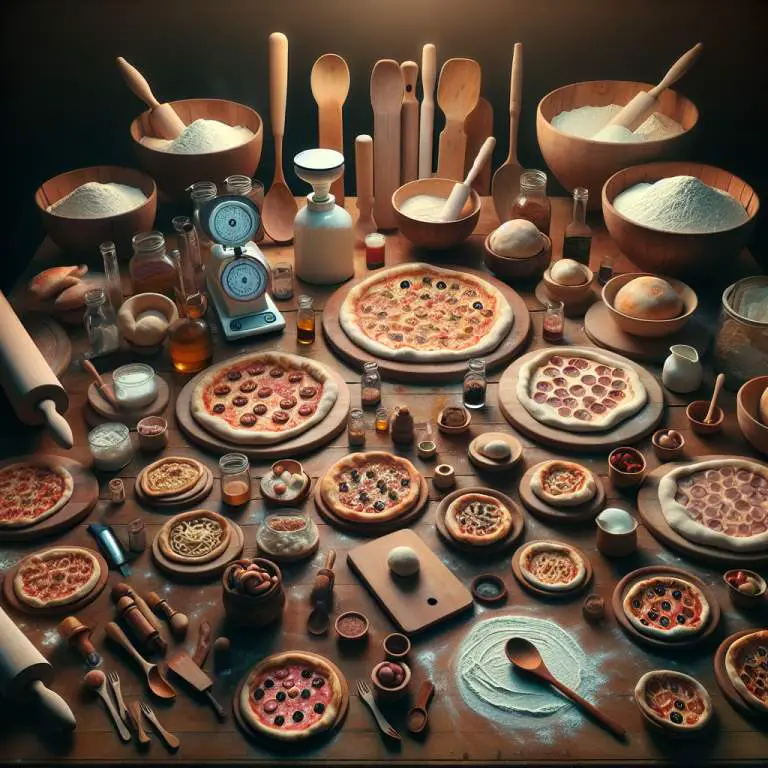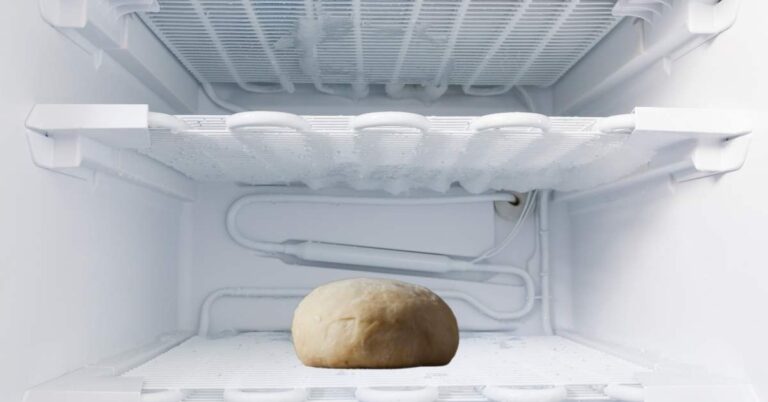00 Flour vs Bread Flour: How They’re Different & Which One Is Better For Pizza
When making pizza, the choice of flour can make or break your crust. The texture, the crunch, the softness—it all starts with what kind of flour you use.
But with so many types out there, how do you choose? Enter the two heavyweights of the pizza world: 00 flour and bread flour.
Believe it or not, there’s actually a raging debate in the pizza community on the merits of 00 flour vs bread flour. So, which is the best flour for pizza?
While both flours share many similarities, they each bring distinct qualities to the table. Especially when it comes to making various styles of pizza.
Whether you’re a fan of the chewy American styles like New York and New Haven or you lean towards the soft and crispy Italian styles like Neapolitan, understanding these flours is key.
In a nutshell: Tipo 00 flour is best for when you want a soft and delicate crust, like Neapolitan. Bread flour is best for when you want a chewier crust, like New York and New Haven style. Keep reading to learn more.
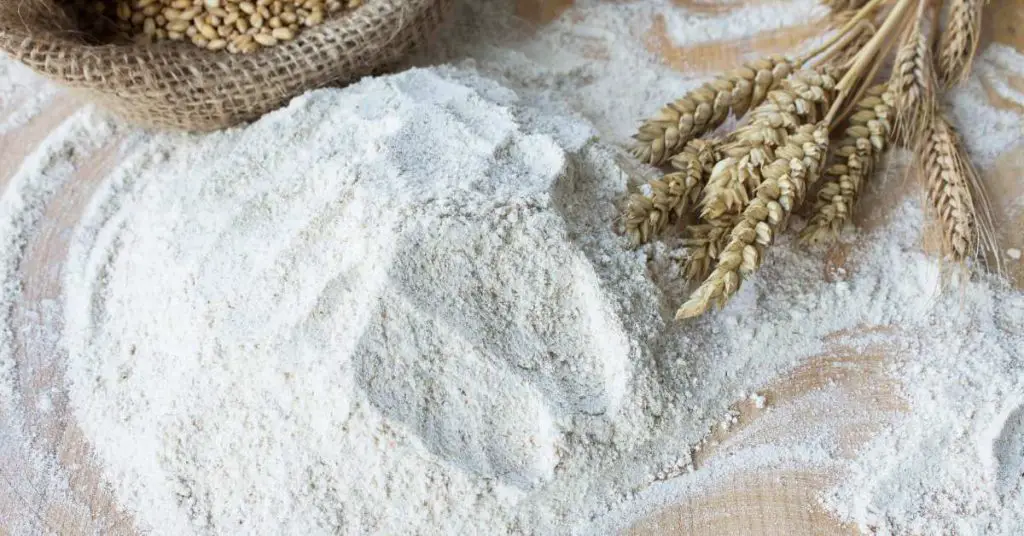
What is 00 Flour?
00 Flour, often pronounced as “double zero” flour, has deep roots in Italian baking traditions. It’s not just a fancy name; the “00” refers to the grade of milling, indicating a particularly fine texture.
This flour comes from the whitest, inner part of the wheat grain, producing its signature powdery consistency. The milling process is meticulous, ensuring the finest grade possible.
While many associate 00 flour with pizza, it’s actually a lot more versatile than that. There are different types, such as 00 pasta flour and 00 pizza flour, each tailored for different dishes.
However, a common misconception in the United States is that “00” denotes protein content. In reality, it’s all about the grind of the grain. 00 flour made for pizza is often high in protein, but not always, which is why you should always check the package before you buy.
Bread Flour: A Pizza Perspective
When you think of the bustling streets of New York or the classic pizzerias of New Haven, what comes to mind? For many, it’s the image of a perfectly baked pizza slice, dripping with cheese, on a crispy and chewy crust. That iconic crust owes its character to bread flour.
Bread flour has a rich history in American baking, which is why it’s a staple in the kitchens of many people across the U.S. Its unique composition, with a higher protein content than most other flours, is the secret behind that signature chewy texture characteristic of American-style pizzas. This protein richness gives it a robust gluten structure with plenty of elasticity and strength.
But why does this matter for pizza? Well, consider what makes for a good pizza crust. It needs to be sturdy enough to hold a medley of toppings, yet flexible enough to fold into that classic New York slice.

The crust should offer a bite that’s satisfying but not overly dense. Bread flour rises to this challenge, and its strength ensures the dough doesn’t tear easily. This makes it a favorite for pizza makers who love a chewier American style crust.
But the nuances of bread flour don’t stop at texture. Its ability to absorb more water means it’s less prone to drying out, making every bite moist and flavorful. Bread flour is also very good at holding onto its strength after longer fermentation periods.
While Italian 00 flour has its place in the world of pizzas, especially for those soft Neapolitan crusts, bread flour is a force in the American pizza landscape.
So, the next time you bite into a thick, chewy crust from a New York pizzeria, take a moment to appreciate the bread flour it was probably made from.
00 Flour vs Bread Flour: Which is Best for Pizza?
Both 00 and bread flour bring unique qualities to the table. But when it comes to making a good pizza crust, which one is best?
Starting with 00 flour, its fine texture is a result of meticulous milling, producing a powder-like consistency. This fineness makes a dough that’s easy to stretch but also somewhat delicate, making it ideal for those ultra-thin Neapolitan crusts.
When baked, pizzas made with 00 flour often have a soft interior with a crispy exterior. This is the signature style of Neapolitan pizza crust.
On the other hand, bread flour is often used in American style pizza. The higher protein content and coarser grains in bread flour results in a stronger gluten network, giving the dough its characteristic chewiness.
This strength is not just about texture; it’s practical. Bread flour-based doughs are resilient, making them perfect for holding a plethora of toppings without getting soggy. Plus, for those who love a crust with a bit of a pull and a satisfying chew, bread flour is the way to go.
But it’s not necessarily about one type of flour vs the other, you can mix them together for great results. This combination harnesses the softness of 00 flour and the strength of bread flour, creating a crust that’s both delicate and sturdy. I do this all the time for my homemade pizza.
The Neapolitan Pizza: Perfect For 00 Flour

Originating from Naples, Neapolitan pizza is a testament to simplicity and quality. With just a few ingredients: tomatoes, mozzarella, fresh basil, olive oil, and pecorino, the Neapolitan pizza is a true classic. But its soul lies in its crust, and 00 flour plays the lead role.
The fine grains of 00 flour create a dough that’s soft, elastic, and incredibly pliable. This allows Neapolitan pizza makers to stretch it into that characteristically thin base with a puffy, airy crust.
When baked in a wood-fired oven, the pizza is essentially flash-cooked. The result is a crust that’s soft and tender on the inside, with a slightly charred, crispy exterior. It’s this juxtaposition of textures, combined with the fresh ingredients on top, that makes the Neapolitan pizza a global favorite.
Bread Flour’s Dominance in American Pizzas
Cross the Atlantic, and you’ll find a pizza scene that’s vibrant, diverse, and deeply rooted in its own set of traditions. From New York City to Chicago, American pizzas have carved out a unique identity. And at the heart of many of these iconic styles is bread flour.
The story of American pizzas is as varied as the country itself. But whether it’s the thin, foldable slices of New York or the deep, hearty pies of Chicago, bread flour plays a pivotal role.
Its higher protein content, typically ranging between 12% to 14%, gives these pizzas their signature chewy texture. It’s this chewiness, combined with a golden-brown crust cooked slowly at a low temperature, that many Americans have come to love and crave.
But the magic of bread flour doesn’t stop at texture. Its strength and elasticity make it easy to work with, especially for those thicker crusts. With all the toppings typically found on an American style pizza, the dough needs to be resilient, holding everything together without collapsing. Bread flour, with its strong gluten network and coarser grains, is perfect for this.
Substitutes for 00 Flour in Pizza-making
While 00 flour holds a special place in the world of artisan pizza, there are times when it might not be readily available. Don’t worry, because there are lots of alternatives to choose from.
All-Purpose Flour: Found in most kitchens already, all-purpose flour is a handy substitute. While it might not have the ultra-fine texture of 00 flour, it can still produce a decent crust.
Bread Flour Blend: As discussed earlier, blending bread flour with 00 flour can be both cost-effective and beneficial for texture. But in the absence of 00 flour, mixing bread flour with all-purpose flour can also produce pretty good results.
Durum Wheat Semolina: Semolina is a coarser flour that can add a distinct bite to your crust. A blend of semolina and wheat flour in your pizza dough works nicely and even adds a slightly nutty flavor.
Whole Wheat Flour: For those looking for something a little more hearty and wholesome, whole wheat flour is an option. It offers a denser, earthier crust with added nutrients and fiber. However, whole wheat flour crusts have a distinct flavor that not everyone likes.
Gluten-Free Flours: Most grocery stores offer various gluten free options, like rice flour, almond flour, or chickpea flour. While they’ll never replicate the texture of standard wheat flours, they can still make a tasty pizza.
Tip: When experimenting with substitutes, it’s essential to adjust hydration levels. Different flours absorb water at varying rates, so tweaking the water content in your dough can make all the difference in achieving the desired crust consistency.
Pizza Flour Tips
Whether you’re a newbie looking to make your first pizza or a seasoned baker aiming to refine your skills, here are some tips to guide you on your pizza-making adventure:
1. Hydration Matters: Water plays a big role in how your pizza crust will turn out. Higher hydration results in a softer, airier crust, while lower hydration gives a denser crust. Start with a basic hydration level, like 50-60%, and adjust based on your preference. I prefer 70% and above when cooking in a home oven.
2. Slow Fermentation: For a crust with a rich flavor (like at a pizzeria), try letting your dough ferment in the refrigerator for 24 to 48 hours. This slow fermentation allows the yeast to produce a dough with unique flavors and a super bubbly crust.
3. Master the Stretch: Instead of using a rolling pin, which can deflate the dough, learn to hand-stretch your pizza. This technique preserves the air bubbles, leading to a puffier crust. Start from the center and work your way out, using your fingers and palms.
4. Invest in a Pizza Steel: A pizza steel can replicate the intense heat of a professional pizza oven. Preheat the steel in your oven for at least an hour before baking, and you’ll be rewarded with a beautifully crispy crust. Pizza stones work well also, and they’re often cheaper than a steel.
Final Thoughts
Wrapping up, 00 flour and bread flour both have their advantages when it comes to making pizza crust. 00 flour is ideal for producing soft, delicate Neapolitan-style crusts thanks to its finely ground texture.
However, bread flour is best when a chewier, thicker crust is what you’re looking for, like with New York and New Haven style pizza. With its higher protein content and larger grains, bread flour produces a crust that can handle loads of toppings without becoming soggy.
That said, blending the two flours gives you the best of both worlds. In the end, choosing between 00 flour and bread flour depends on the type of pizza one wants to create.
Understanding the attributes of these flours empowers home cooks and pizza makers to craft crusts that perfectly complement the other elements of their pies.
Related Questions
I’ve noticed that both 00 flour and bread flour Often have high protein content. Does this mean they can be used interchangeably in all recipes?
While both 00 flour and bread flour often have a high protein content, they serve different purposes in baking. 00 flour is finely milled and is typically used for recipes that require a soft and delicate texture, like Neapolitan pizzas. Bread flour, on the other hand, has a coarser texture and is designed to provide strength and elasticity to doughs, making it ideal for breads that need a good rise. While there’s some overlap in their uses, it’s essential to choose the flour that aligns best with the desired outcome of your recipe.
I’m trying to Get a pizza crust that’s a blend of chewy and Delicate. Which flour should I use, 00 or bread flour?
If you’re aiming for a crust that strikes a balance between chewiness and crispiness, consider blending both flours. Using 00 flour will give you that crispy exterior, especially when baked at high temperatures, while bread flour will give it a chewy texture due to its higher gluten content and coarser grains. Experiment with different ratios to find the perfect blend for your taste!

